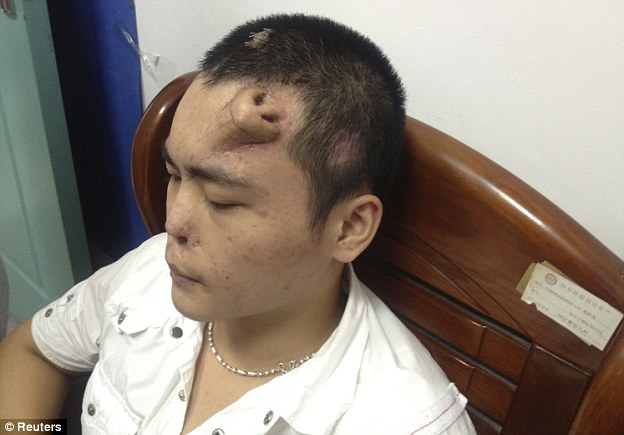At the Hospital de Egas Moniz in Lisbon, Portugal, the unnamed woman, a U.S. citizen, had tissue from her nose implanted in her spine.Doctors hoped the cells would develop into neural cells and help repair the nerve damage to the woman's spine. But the treatment failed.However, last year, eight years after the stem cell operation, the woman, then 28, complained of increasing pain in the area.Doctors discovered a three-centimetre-long growth, which was found to be mainly nasal tissue, as well as bits of bone and nerve branches that had not connected with the spinal nerves.Neurosurgeon, Brian Dlouhy from the University of Iowa Hospitals and Clinics in Iowa City, who removed the growth, said it was benign, but was secreting a 'thick copious mucus-like material', which was probably why it was painfully on her spine.Jean Peduzzi-Nelson, a stem cell researcher at Wayne State University in Detroit, Michigan, who advised the team who conducted the surgical technique – which had been tested on rodents – said that most of the recipients of the nasal tissue who received the right kind of rehabilitation after their surgery experienced improvement.She told the New Scientist: 'I am saddened to learn of this adverse event, however, the incidence of this problem is less than one per cent.'Many patients receiving this treatment have had remarkable recovery.'In 2010, the Lisbon researchers published their results using this method on 20 people paralysed at various locations in their spine. Eleven experienced some recovery of movement or sensation; one person's paralysis got worse, one developed meningitis and four others experienced minor adverse events.Stem cells – or ‘master cells’ - are capable of turning into other cell types, so are widely seen as a repair kit for the body.While often championed as the future of medicine, stem cells' ability to metamorphasise and increase carries an inherent danger, namely that when when implanted into a person they could turn into dangerous cancer cells.(dailymail.co.uk)Bakudaily.az
Stem cell patient ACCIDENTALLY grows a NOSE on her back - PHOTO+VIDEO
World
11:30 | 10.07.2014

Stem cell patient ACCIDENTALLY grows a NOSE on her back - PHOTO+VIDEO
A woman has developed a nose-like growth eight years after a stem cell treatment to cure her paralysis failed.
Follow us !










